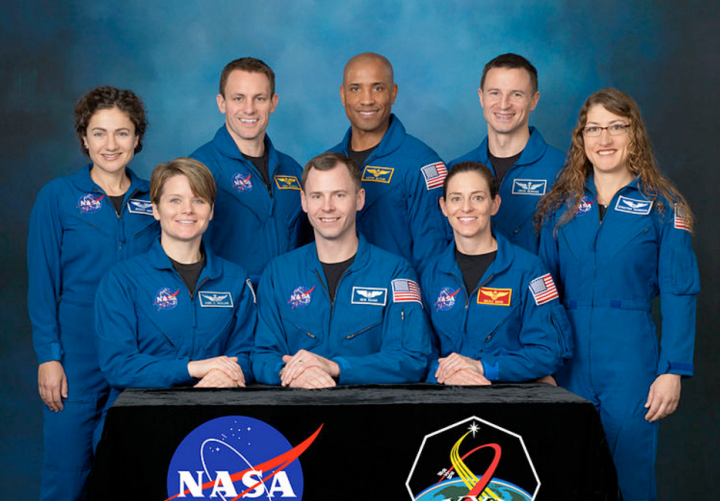
Jessica Meir, Christina Hammock Koch, Anne McClain, and Nicole Aunapu Mann are the four women representing this year’s NASA astronaut class. Their training will be ongoing and will prepare them for all kinds of space flight, but the planet on the tip of everyone’s tongue is definitely Mars. NASA’s inaugural human-piloted Mars excursion is at least 15 years away, and is 35 million miles long. But these four pioneering women are as much in the running to make the journey as any of the other NASA astronauts in their class.
Each of the four women accepted into the new NASA class pursued impressive, patriotic careers before applying to become astronauts. Anne McClain was a US army helicopter pilot and Nicole Mann was a fighter jet pilot with the Marine Corps – both served on the front lines in Iraq. Jessica Meir has a Ph.D in marine biology, which led her to some freezing fieldwork scuba diving below the ice in Antarctica. Christina Koch spent a year in the South Pole overseeing the more than 10,000 gallons of liquid helium used to supercool some of the world’s most powerful telescopes. Three out of four of these new astronauts said that they’ve dreamed of being astronauts ever since they were kids.
Over 6,000 candidates applied for this year’s NASA astronaut program. Candidacy alone requires two years of flight training on T-38 supersonic jets and testing in deep underwater conditions and simulated null gravity environments. NASA inducts new classes of astronauts only once every five years or so, and the rigorous testing program ensures that only the cream of the crop get their NASA wings. This is the first time in history that a class of NASA astronauts has featured an equal number of men and women.
Editors' Recommendations
- It’s one giant leap for fashion as Prada spacesuits head to the moon
- NASA’s Mars rover makes ‘one small drop for humankind’
- How will NASA keep Mars astronauts safe from cosmic radiation? Here’s the plan
- NASA may have to dig deeper for evidence of life on Mars
- NASA astronaut offers glimpse inside new Starliner capsule


